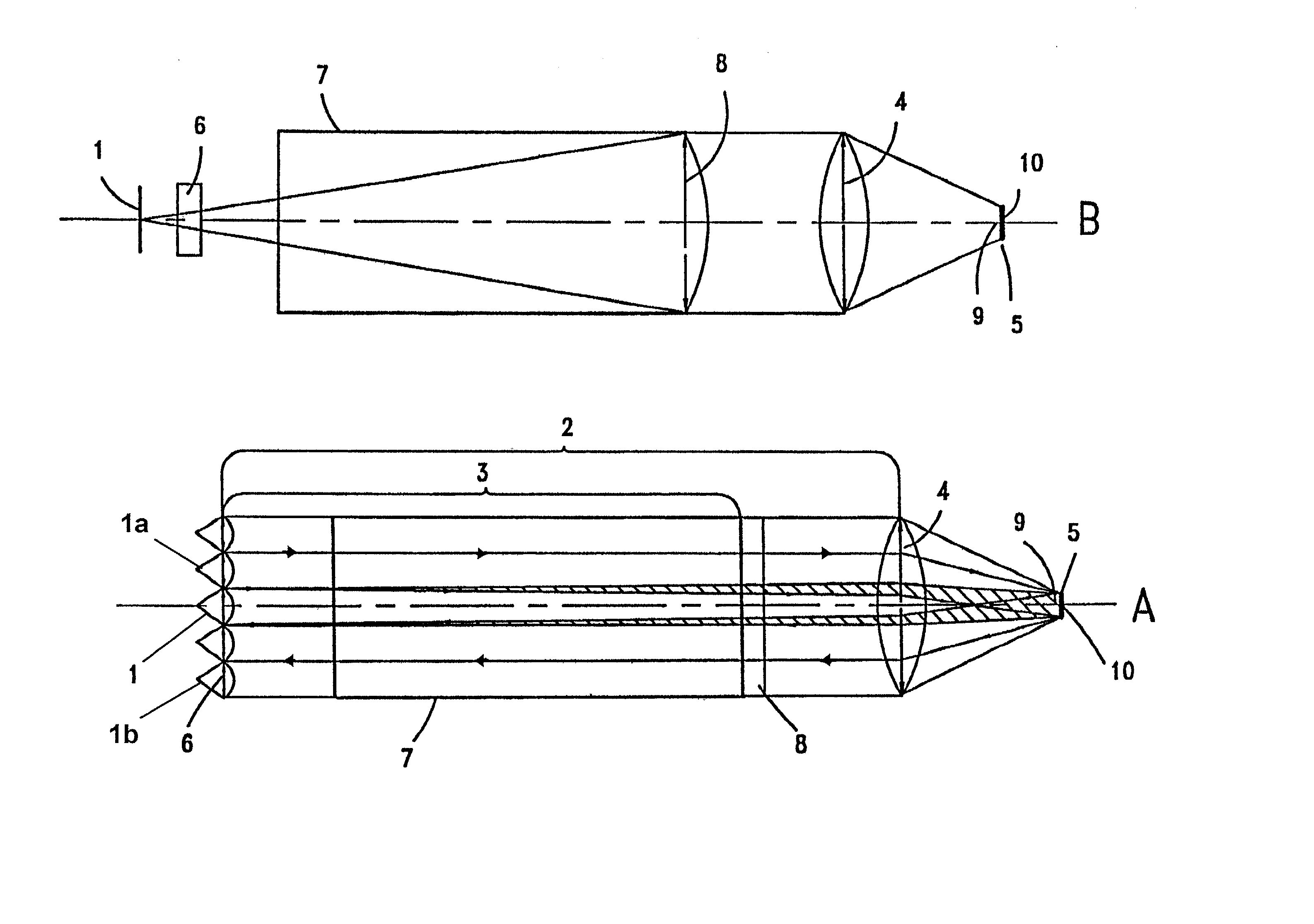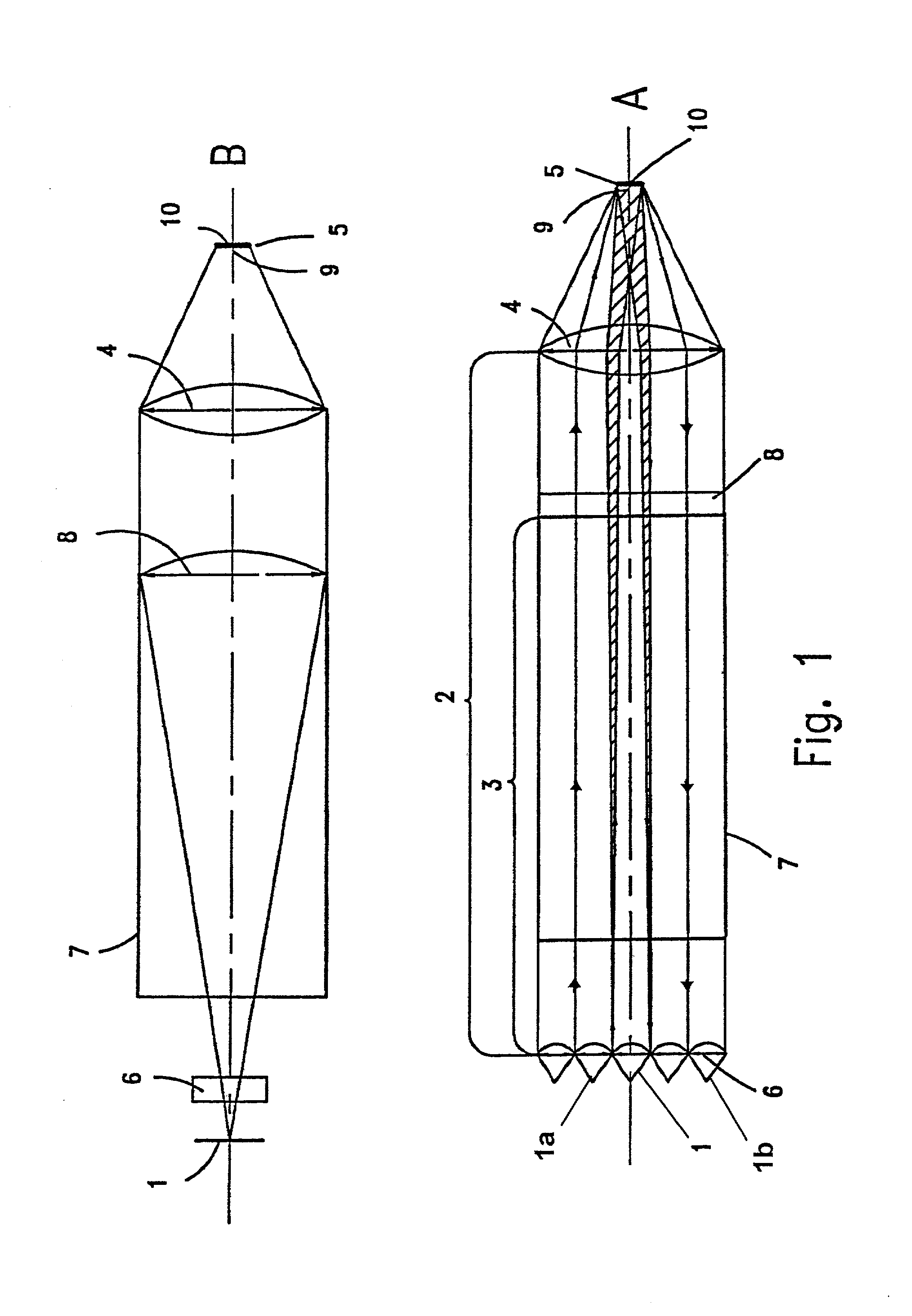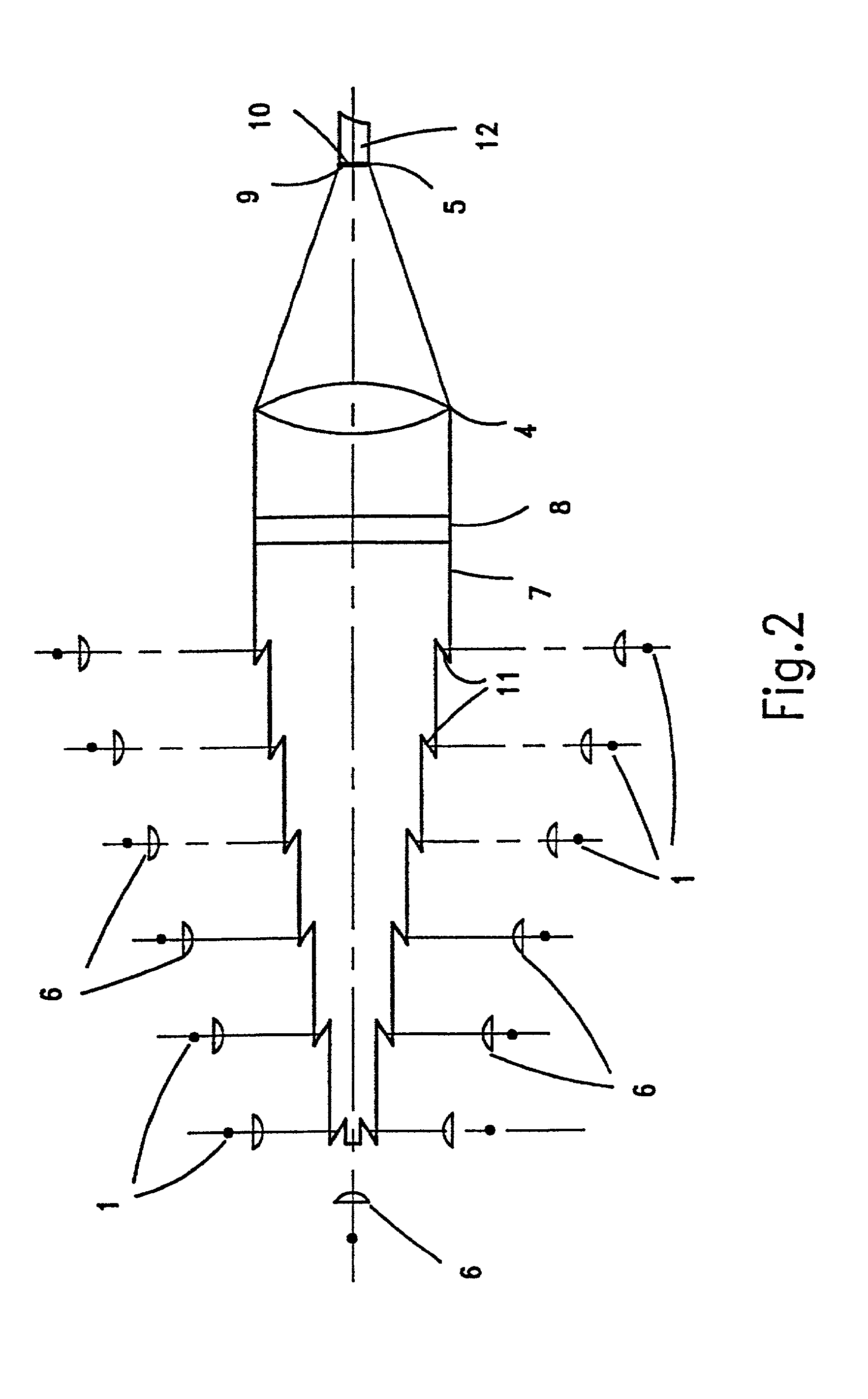Method and apparatus for unifying light beams
- Summary
- Abstract
- Description
- Claims
- Application Information
AI Technical Summary
Benefits of technology
Problems solved by technology
Method used
Image
Examples
Embodiment Construction
[0018] The invention aims to provide a light-emitting adder or light unifier, which comprises a plurality of light sources, particularly laser sources, each of which emits a beam having a rectangular cross-section in a plane perpendicular to the source optical axis, viz. perpendicular to the direction of propagation of the emitted beam. Said cross-section has a long side and a short side. The long side will be called herein the longitudinal side and the short side will be called the transverse side. In a system of Cartesian coordinates, the X axis will be considered to be parallel to the longitudinal direction, the Y axis to the transverse direction, and the Z axis to the direction of propagation of the beam. In rectangular laser beams, the ratio of the long side of the rectangular cross-section to the short side is high, e.g., 20 / 1 or 120 / 1. Beams of such cross-section are produced by laser sources well known in the art, for instance SDL-6370-A, SDL-6380-A, SDL-6380-L-2, S-915-500C...
PUM
 Login to View More
Login to View More Abstract
Description
Claims
Application Information
 Login to View More
Login to View More - R&D
- Intellectual Property
- Life Sciences
- Materials
- Tech Scout
- Unparalleled Data Quality
- Higher Quality Content
- 60% Fewer Hallucinations
Browse by: Latest US Patents, China's latest patents, Technical Efficacy Thesaurus, Application Domain, Technology Topic, Popular Technical Reports.
© 2025 PatSnap. All rights reserved.Legal|Privacy policy|Modern Slavery Act Transparency Statement|Sitemap|About US| Contact US: help@patsnap.com



